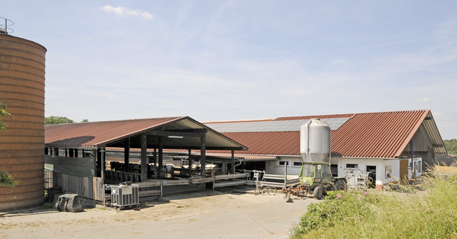Training Room 1: First Steps to Safety—Understanding Hazards
Session 4: Identifying Agricultural Hazards—Farm Machinery
Farm Equipment Injuries—No Margin for Error

© Fotolyse/23883926/Fotolia
According to Canadian Agricultural Injury Reporting, over half of the agricultural deaths reported were due to four machine-related causes: machine rollovers, machine runovers, machine entanglements, and traffic collisions. Being aware of the hazards and controlling them by taking part in proper training, following safety procedures, and using appropriate protective equipment is critical.
Learning Target
In this session you will learn about the major hazards related to farm machinery. As you learn, you might ask yourself the following questions:
- What farm machinery presents the most significant hazard to you in your agricultural workplace?
- What can you do to promote farm-machiner safety in the workplace?
Hazards Associated with Large Farm Machinery
Watch and Listen
Many different kinds of machinery are used on a farm. Tractors and augers are the machines associated with the highest rate of injury. Read the information and/or watch the following videos to learn more about the hazards of different types of machinery on a farm:
- Video: Rotating Parts Safety or Fact Sheet: Safety Up: On Power Take Offs (a particular kind of rotating part)
Video clips from Farm Safety: It's No Accident (Alberta Agriculture and Rural Development)
Fact sheets from Alberta Agriculture and Rural Development or Work Safe Manitoba
Hazards Associated with Points of Contact with Machinery Parts

© John Sfondilias/1158677/Fotolia
It is important to have an awareness of the major hazards related to farm machinery. Particular points of contact with machinery can cause injury. Mowers, tractors, shredders, harvesters, grinders, blowers, augers, and balers have specific characteristics and hazards. These machines can crush you or pull you in. You can be hit by loose items thrown by these machines. The cutting edges, gears, chains, revolving shafts, rotating blades, and levers are all hazards that could cause injury. Taking precautions not to fall while working on or near farm machinery is also important.
From Agricultural Machinery Hazards (Farm Safety Association Inc.)
Learn about these point-of-contact hazards by reading the resources below.
Organizing Knowledge
Read the information and look carefully at the images on the following documents to learn about the following point-of-contact hazards:
- Pinch points
- Wrap points
- Shear points
- Pull-in points
- Crush points
Agricultural Machinery Hazards published by the Farm Safety Association, Canada
Machinery Safety on the Farm published by the Virginia Cooperative Extension, USA
Try This
Try the Points of Contact Hazard Game to check your understanding of pinch points, wrap points, crush points, pull-in points, and shear points.
Time to Practise
Identifying Farm Machinery Hazards
-
Use this link (or go to the www.casa-acsa.ca website and search for farm safety game) to determine if you can find the hazards at various sites during a simulated farm safety inspection. Scroll to the bottom of the video page to find the game.
-
How safe would you be around farm machinery? Use this Top 25 Ways to Prevent Injury with Power Equipment Checklist from the Alberta Government's Farm Safety: It's No Accident to rate your own power equipment safety knowledge.
-
Use the Power Equipment Safety Survey interactive checklist to think about and assess possible hazards while working with power equipment.
Your task: Project 1—Health and Safety Hazard Assessment Tool
Think about the following questions:
-
What kinds of farm machinery are most useful to the work on your agricultural worksite of choice?
-
What hazards most concern you when working with this machinery?
If you want to choose farm machinery as one of the focus hazards for your project, begin some work now. You can use the Project 1 Template to collect your ideas.
- Determine the farm machinery hazards you find the most worrisome on your worksite. Think about the point-of-contact terms that you learned above and describe the hazards.
- What question(s) would you ask your supervisor to help you assess the hazards of an unfamiliar piece of farm machinery?
- What question(s) would you ask your supervisor to help you assess the hazards of particular operating procedures for a piece of farm machinery?
- What kinds of injuries could you be at risk of?
Possible resources
- Use the websites, videos, and checklists above to help your thinking.
- Ask your supervisor or a co-worker to help you develop you ideas for questions and statements.